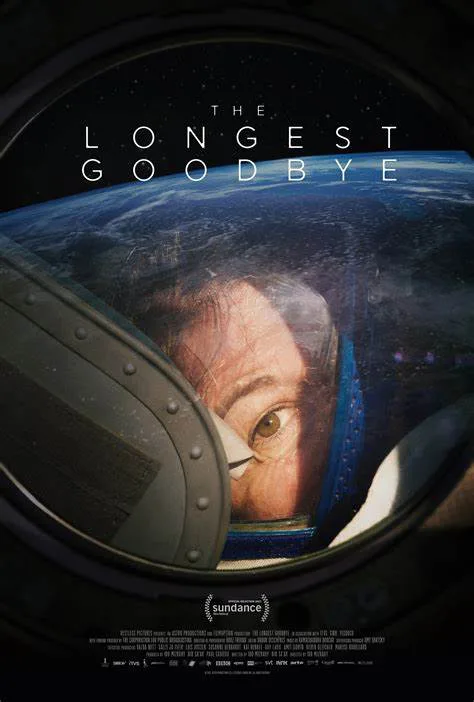The crew of a space craft peering out its window at the vast, impossibly blue Earth below. An astronaut shares, “I really miss the sound of rain and the fresh air that comes with it.” The morose timbre of the astronaut’s voice contrasted with the beautiful image of our planet sets the bleak tone for Ido Mizrahy’s documentary “Space: The Longest Goodbye,” which explores issues facing plans for a manned mission to Mars.
After establishing the difficulty current astronauts have maintaining relationships with their family on Earth while in space, the doc cuts to a montage of news footage announcing NASA’s plans for a manned mission to Mars in the next decade. The mission—known as Artemis—would last three years. The challenge is to not only figure out how to physically prepare astronauts for this much time in space, but also psychologically.
The film then explores historically how these obstacles were tackled when the first space station was built, and how what was learned from the decades of research since then can be applied to this new challenge. Talking head interviews, some of which are filmed in a strange under-lit manner, include NASA scientists and consultants like operation psychologist Dr. Al Holland, behavioral scientists like Dr. Jack Stuster and Dr. Alexandra Whitmire, and virtual reality pioneer Jacquelyn Ford Morie, among others.
The doc also interviews a handful of astronauts, like Cady Coleman and her son Jamey, who share their emotional experiences from when Coleman went on a prolonged mission to space when the boy was only nine years old. Astronaut Kayla Barron and her husband Tom discuss her decision to apply for the Mars mission, and what it could mean for their future family planning. These interviews are the most compelling aspects of the documentary, as they shed light on how many astronauts hide their true feelings in order to stay active within the program.
While the film covers many angles regarding the psychological effects of spending any amount of time in space and NASA’s many preparations to ease these effects, it never probes beyond what is presented by these experts. It never asks questions of their methods. Nor does it ever question why science innovations alone seem to be the only solutions explored. For all its forays into A.I. and virtual reality, I was struck by how, beyond some footage of Cady playing the flute, the arts and humanities are never discussed when these scientists are thinking of ways to make life in space more palatable for the astronauts. Does NASA actually have any research into how art therapy, poetry, music, movies, etc. can help? The creepy robotic companion known as CIMON gives off big Hal-9000 vibes, yet I question if anyone involved in its creation has ever seen “2001: A Space Odyssey.” It’s strange to me that for all the threads this doc follows, the impact of art on the well-being of humans never brought up at all.
I also found it incredibly curious that Sukjin Han, a crew commander for one of the Mars simulations, was the only interviewee, be it study participant, scientific expert, astronaut, or family member—to concede that in order for a manned mission to Mars to actually succeed, there will need to be some self-sacrifice on the part of the crew members. As he says, once out there on the mission, there is no stopping the simulation. So for all the solving of these psychological issues, for all the selection criteria, why then is this concept not explored further in the doc?
Along with the various unexplored threads, the doc’s rote editing and under-lit interview casts a dour shadow over the entire experience, as if everything involved in space exploration is just depressing and/or terrifying. There is very little wonder here, or joy. Just problems to be solved in a cold and calculated manner. This grim mood, along with its lack of curiosity, somehow renders this whole film into being both merely a promotional piece of propaganda for NASA, while simultaneously warding off any kind of excitement or shared sense of human achievement for what a mission to Mars could mean.
The film ends with Coleman sharing that if she could have stayed aboard the space station for another six months, she would have stayed “in a minute.” Mizrahy underscores her confession with overly serious music, as if this is the bleakest moment yet. As if this statement should have us worried for Coleman. As if being in space were an addiction. But, again, to Han’s point, isn’t that the kind of dedication you’d want from someone who has signed up for a three-year mission to Mars?
Whatever it is that Mizrahy finds interesting about this subject remains frustratingly oblique, ultimately leaving “Space: The Longest Goodbye” a muddled bag of contradictions and underdeveloped threads and themes. Is this film supposed to be a warning? A celebration? A little of both? I sure as hell don’t know.




















